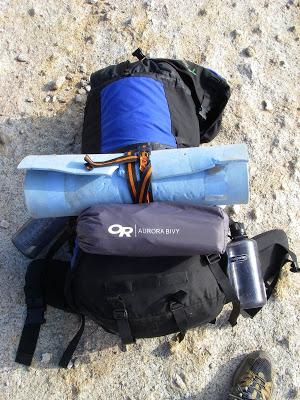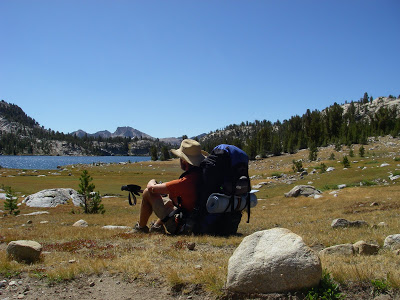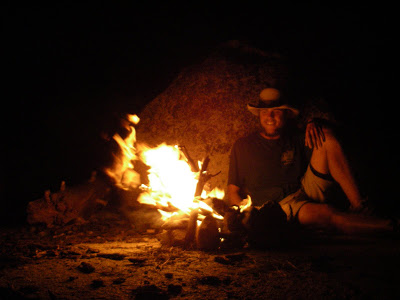 |
| Near Cathedral Peak |
 |
| My pack! |
There's many schools of thought when it comes to selecting a backpack. It is generally accepted by the long distance backpacking community that you're pack should be the lightest internal frame you can afford. My pack was an internal frame with about 60Liters of pack space. For comparison, a daypack usually has 15-25Liters of space while some hardcore backpacks can have upwards of 75Liters of space.
You're probably thinking, long-trip=need more space. This is NOT necessarily true. I went with the 60L size because it was pretty lightweight and you can get away with this on the JMT. The 75L+ sizes are more appropriate if you're going on a long-distance trip AND carrying a bunch of technical climbing gear. So don't necessarily go out and buy the biggest one possible; its just extra weight.
Your Sleeping Bag
The John Muir Trail elevations range from 4,000-13,000ft and it would be wise to "spend" a little extra weight on a warmer bag. The 20 degree F (-6C) bags are considered the minimum for the JMT. I went with a 0F degree (-18C) bag because I went in September. This is really your call- do you get easily cold at night, do you have the room for a warmer bag ect. I know of people who have done the JMT without a sleeping bag and simply brought a down-jacket. I however was happy to carry the extra pound of a 0 degree bag, especially towards the southern terminus of the trail where I was sleeping at 11,000-12,000ft.
 |
| Virginia Lakes |
If you've read my earlier post, you know I recommend a bivy sack on the John Muir Trail over any tent. Bivy sacks are much lighter and you can spend less money to get the higher end bags. My Outdoor Research Aurora Bivy is right around a pound in weight and has never failed me. It kept me warm in rain, hail, and cold nights on the JMT. I even spent a night at 13,500ft and was toasty. Unless you're going with a group of 3 or 4, go with a bivy sack.
Bear Canister
 |
| Lake Edison |
This is another topic that has many schools of thought. I'll simply let you know what I packed. First of all, bring layers. There's a huge temperature difference in the Sierras depending on the time of day and elevation. It can get in the 90's in Yosemite Valley yet snow at the higher elevations well in to June. So, here is what I brought:
- Two pairs of underarmor compression shorts and a pair of boxers
- One pair of athletic shorts (for hot daytime temps)
- One pair of hiking pants
- Two short-sleeved polyester shirts
- Rain gear; pants and a jacket
- Two pairs of hiking socks
- One fleece sweater
- Long underwear, top and bottom





No Comments